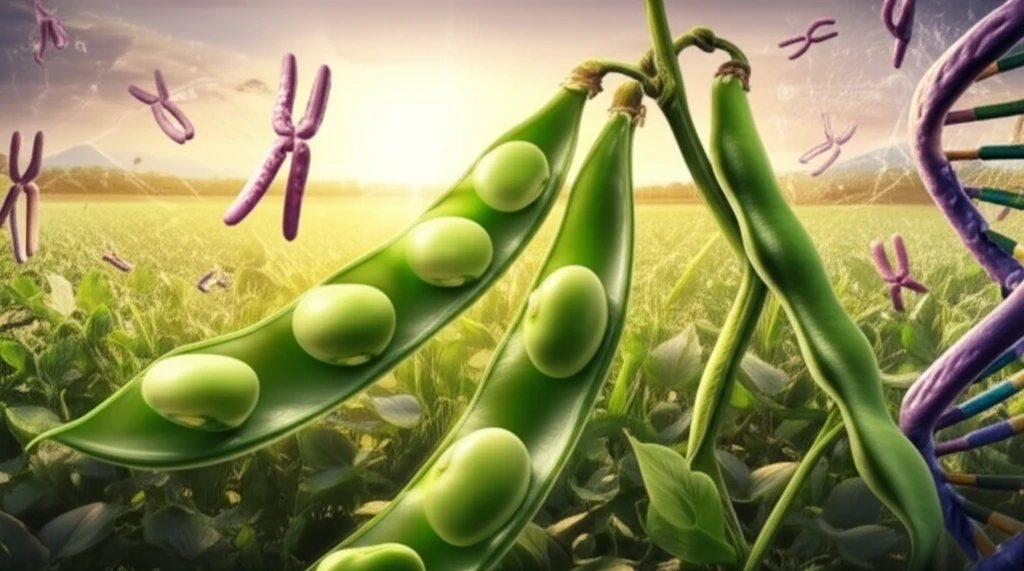
Unlocking Nature's Secrets: How Scientists Are Revolutionizing Crop Domestication
"From Ancient Beans to Modern Breakthroughs: A Deep Dive into the Genetics of Crop Evolution and Its Impact on Our Food Supply."
Throughout history, humans have cultivated crops, a journey that has reshaped ecosystems and fueled civilization. But what if we could truly understand the secrets of this age-old partnership? Scientists are now delving into the genetic mechanisms that drove the domestication of plants, like the humble bean, offering a revolutionary perspective on crop evolution.
This groundbreaking research, published in the journal The Plant Journal, unveils the intricate genetic architecture of 'pod shattering' in common beans. The study, led by a team of international researchers, has identified key genetic regions that control crucial traits in bean plants, like pod shattering, with potential implications for how we breed and improve crops.
This article explores the key findings of this study, the innovative methods used, and what they mean for the future of agriculture. We'll explore the convergence of genetic mutations, the roles of specific genes, and the potential for enhancing food production in a sustainable way. Prepare to be amazed by the intricate dance of nature and the power of scientific discovery.
Deciphering the Bean's Genetic Code: A Deep Dive into Pod Shattering

At the heart of this research is the study of 'pod shattering,' the natural process where seed pods split open to release seeds. While beneficial in the wild, this trait presents challenges for farmers, leading to harvest losses. Researchers focused on the genetic basis of this trait in the common bean (Phaseolus vulgaris), a staple crop worldwide.
- Chromosome 5 is a key player: The primary genetic region influencing pod shattering was located on chromosome 5.
- Multiple Genes at Work: Additional genetic regions on chromosomes 5, 4, 6, and 9 play roles in controlling the level and mode of shattering.
- Epistatic Interactions: The expression of pod shattering depends not only on the individual effects of genes, but also on their interactions.
- Lignin Patterns and Cell Wall Biosynthesis: The genes involved in pod shattering are linked to cell wall biosynthesis and lignin deposition.
A Future of Sustainable Agriculture
This research opens new avenues for improving crop breeding practices. By understanding the genetic basis of pod shattering, scientists can develop bean varieties that are more resilient to environmental challenges and enhance food production. This knowledge can be extended to other crops, contributing to a more sustainable future for agriculture and food security. The study on the common bean provides a valuable model for understanding the complexities of plant evolution, which opens the door to innovations for all plant-based foods.
